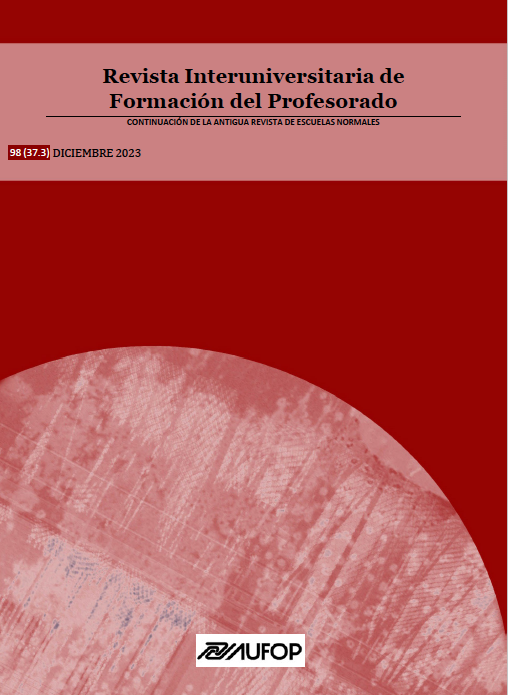Conexiones cognitivas entre expresión corporal y formación rítmica en Educación Primaria. Un estudio con docentes de música en Chile
A study with music teachers in Chile
DOI:
https://doi.org/10.47553/rifop.v98i37.3.100661Resumen
En el área de la neurofisiología, se ha encontrado que existe una gran influencia del desarrollo motriz en el procesamiento de la música. Por lo anterior, la expresión corporal parece ser una forma ideal de abordar la rítmica musical en la etapa escolar. El propósito de esta investigación, que forma parte de un trabajo de mayor alcance, fue entender de qué manera las profesoras y profesores de música en la Educación Primaria chilena perciben la relación entre ritmo y movimiento. Con ello, se ha pretendido encontrar vínculos entre su práctica docente y las teorías y hallazgos que abordan las relaciones cognitivas entre estos aspectos. Se recabaron los datos aplicando un cuestionario en línea a una población de 203 profesores chilenos. Dentro de este instrumento, se incluyeron once preguntas cerradas referentes al binomio ritmo-movimiento y tres preguntas abiertas relacionadas con la formación rítmica en el salón de clases y el empleo de instrumentos musicales. La información recopilada reveló que los participantes coinciden en que el medio más eficaz para desarrollar habilidades rítmicas es el movimiento corporal. El profesorado de enseñanza musical incorpora la marcha, el baile, estructuras coreográficas y la percusión corporal para favorecer la adquisición del pulso, acentuaciones y frases rítmicas. De igual modo, se utiliza frecuentemente la expresión motriz como recurso didáctico en situaciones grupales de aprendizaje.
Descargas
Publicado
Versiones
- 2023-12-28 (2)
- 2023-12-27 (1)
Cómo citar
Número
Sección
Licencia
The "Revista Interuniversitaria de Formación del Profesorado (RIFOP)", with ISSN print 0213-8646 and ISSN electronic 2530-3791), adheres to the copyright notices proposed by Creative Commons
Authors’ rights
Papers published in the journal are subject to the following terms:
1. The Asociación Universitaria de Formación del Profesorado (AUFOP) is the editor of the RIFOP and holds the copyright of the papers published therein. The reuse of these is allowed under the license for use as indicated under point 2.
© Asociación Universitaria de Formación del Profesorado (AUFOP)
2. The papers are published in electronic version under the license CreativeCommons Reconocimiento-NoComercial-SinObraDerivada 3.0 España (texto legal). Papers can be copied, used, disseminated, transmitted and publicly exhibited provided that: i) the authorship and original publication source are cited (journal, editors and URL of the paper); ii) they are nit used for commercial gain; iii) the existence and specifications of the license for use are mentioned.
3. Auto-archiving conditions. Authors are allowed and encouraged to disseminate electronic pre-print versions (versions prior to peer review) and/or post-print (versions reviwed and accepted for publication) of their papers prior to their publication, since this favors prompt circulation and dissemination and supposes a possible increase in cites and scope within the academic community.
Privacy declaration
The names and email addresses incorporated into this journal will be used solely for the declared purposes of the journal and will not be available for any other purposes or to third parties.






